2015 Honda CR-V Vs. 2015 Subaru Forester

One year ago we put eight compact crossovers in a battle royale to determine which high-riding hatchback is the best in the business. Focusing on comfort, efficiency, value and practicality, a surprise champion emerged; the Subaru Forester.
Another shock that came out of that comparison was how poorly the 2014 Honda CR-V performed. When the dust settled, the CR-V had only managed a fifth place finish, losing to all of its main competitors like the Toyota RAV4 and Mazda CX-5. Average fuel economy, poor rear seat comfort, a lackluster design, an unfavorable transmission and an absence of the usual Honda refinement all relegated the CR-V to a sub-par finish.
SEE ALSO: 2015 Honda CR-V Review
But 2015 sees the CR-V receiving its mid-cycle refresh and Honda has worked hard to address all of these short comings. An updated design inside and out, the most notable change for 2015 is the addition of a continuously variable transmission (CVT).
To see how substantial these updates are in improving the CR-V, we decided to pit it against our current benchmark in the compact crossover category, the defending champion Subaru Forester. With specifications mirroring each other so closely, we assumed this would be a tight battle – and it was. What we didn’t expect is how different these two vehicles actually are.
Winning Formula Under the Hood
The 2015 CR-V and Forester stick to the same Compact CUV formula when it comes to drivetrains. A large four-cylinder engine sends power through a CVT to all four wheels. But that’s where the similarities end. In the Forester the engine is a Boxer design that produces 170 HP and 174 lb-ft. of torque in a greasy gurgle out of the exhaust pipe. The all-wheel drive system defaults the power split percentage wise 60/40 to the front and rear wheels.
The CR-V makes do with a smaller but more powerful 2.4-liter engine that makes 185 HP and 181 lb-ft of torque. The all-wheel drive system’s power split is less aggressive, sending more power to the front wheels at all times. That combined with a ground clearance of just 6.8 inches (6.4 for FWD models), or 1.9 shorter than the Forester, emphasizes that the CR-V is meant more for on-road excursions while the Forester can handle some mild off-roading.
Attack of the Drones
Despite having less power, the Forester is the more responsive vehicle under acceleration thanks to aggressive throttle mapping and a 150-lb. weight advantage. More troublesome for the CR-V though is an engine drone and minor shudder that occurs at low RPM. Although we’re unsure if this is caused by the CVT or the engine itself, it’s annoying albeit subtle.
On the fuel economy front, the CR-V should have a distinct advantage. Rated at 26 MPG in the city and 33 MPG on the highway, the Honda holds a 2 MPG city and 1 MPG highway advantage over the Subaru. But during wintery real world testing, the Forester actually beat the CR-V by a slim margin posting an observed average of 24 MPG versus 23.8 MPG.
Clever Packaging Wins the Day
So far, things aren’t looking good for the CR-V. But rest assured Honda fans, from here on out the CR-V begins to shine, beginning with cargo capability. Rated to haul 35.2 cubic feet of cargo behind the rear seats, the CR-V holds a small advantage space-wise over the Forester. With the seats folded down the numbers swing in the Subaru’s favor, but real world usage does not reflect that.
Using a clever forward flipping rear seat cushion, the CR-V’s load floor remains flatter when the rear seat backs are down. What’s more, the CR-V load height is much lower, a by-product of the lower ground clearance.
SEE ALSO: 2014 Subaru Forester Review
Like ride comfort, from the driver’s seat it’s a bit of a wash. The CR-V offers the more comfortable seat and superior driving position, but the Forester wins on visibility. With a lower beltline, squarer rear window and door mounted mirrors, sightlines out of the Forester are fantastic.
Rear seat comfort in both crossovers is good, with the Forester holding a slight advantage thanks to a less flat seat bottom. Rear armrest placements in the Forester are better angled towards adult passengers while the lower locations of the armrests in the CR-V are more kid friendly. Rear seat legroom is a virtual tie, but the CR-V does offer a bit more headroom due to a less intrusive sunroof hump.
Compare Specs
| Vehicle | 2015 Honda CR-V | Advantage | 2015 Subaru Forester | |
|---|---|---|---|---|
| Engine | 2.4 L Four-Cylinder | - | 2.5 L Four Cylinder | |
| Transmission | CVT | - | CVT | |
| Horsepower | 185 HP | CR-V | 170 HP | |
| Torque | 181 lb-ft. | CR-V | 174 lb-ft. | |
| Weight | 3,521 lbs. | Forester | 3,366 lbs. | |
| Rear Legroom | 38.2 inches | - | 38 inches | |
| Cargo Space (seats up) | 35.2 cubic feet (no split fold) | CR-V | 34.4 cubic feet | |
| Cargo Space (seats down) | 70.9 cubic feet | Forester | 74.7 cubic feet | |
| Fuel Economy (US) | 26 MPG city, 33 MPG hwy | CR-V | 24 MPG city, 32 MPG hwy | |
| Fuel Economy (CDN) | 9.1 L/100 km city, 7.2 L/100 km hwy | - | 9.6 L/100 km city, 7.5 L/100 km hwy | |
| Observed Fuel Economy | 23.8 MPG | Forester | 24 MPG | |
| Starting Price(US) | $24,200 | Forester | $23,045 | |
| Starting Price(CDN) | $27,863 | - | $27,645 | |
| Top Trim(US) | $33,650 | Forester | $32,840 | |
| top Trim (CDN) | $37,663 | - | $37,345 |
Technologically Packed
Subaru has come a long way with the brand’s interiors, but there is still farther to go. The CR-V’s features a better design with more premium materials and higher levels of fit and finish. We prefer the CR-V’s dual screen set-up over the Foresters as it’s easier to use and displays the reverse camera on the larger infotainment screen instead of the smaller secondary screen like the Subaru does.
Both the CR-V and Forester can be had with impressive technology like adaptive cruise control and forward crash detection. The CR-V ups the ante with active lane keep and lane watch camera, while the Forester counters with lockable AWD and a larger sunroof. That near panoramic sunroof in the Forester does not tilt up to vent though and we would give the technology edge to the CR-V. The best part of the Honda’s active lane keep is that it can be used with the lane departure warning turned off, but the system does take some getting used to as it is aggressive and tugs on the steering wheel when making corrections.
The Verdict:
With these two crossovers are so closely matched, it might all come down to a question of price. Starting at $23,045 after destination charges, the Forester, with standard all-wheel drive, actually undercuts the front-wheel drive base CR-V which starts at $24,200. After that though, the pricing basically mirrors each other depending on what equipment is included. At the high end, a fully loaded Forester Touring with the eyesight option comes in at $32,840, which is cheaper than a CR-V Touring AWD listed at $33,650. But as mentioned earlier, that extra $810 does net more technology.
So what is a consumer to do? Well, it comes down to where you live and what are your priorities. If you live in a hilly region where the roads are wet and muddy in the summer, then snowy and icy in the winter – the Subaru Forester is the right choice. But for everyone else, we recommend the Honda CR-V. Despite its minor drivetrain woes, the CR-V is a more refined vehicle everywhere else with better comfort, greater utility and simple usability.
2015 Honda CR-V, 2015 Subaru Forester
LOVE IT
- Comfort
- Utility
- Ease of use
- Technology
- Fuel efficiency
- Sightlines
- AWD system
- Drivetrain
LEAVE IT
- Engine drone / shudder
- Real world fuel economy
- Sightlines
- Fit and finish
- Cargo utility
- Comfort

A 20+ year industry veteran, Mike rejoins the AutoGuide team as the Managing Editor. He started his career at a young age working at dealerships, car rentals, and used car advertisers. He then found his true passion, automotive writing. After contributing to multiple websites for several years, he spent the next six years working at the head office of an automotive OEM, before returning back to the field he loves. He is a member of the Automobile Journalists Association of Canada (AJAC), and Midwest Automotive Media Association (MAMA). He's the recipient of a feature writing of the year award and multiple video of the year awards.
More by Mike Schlee



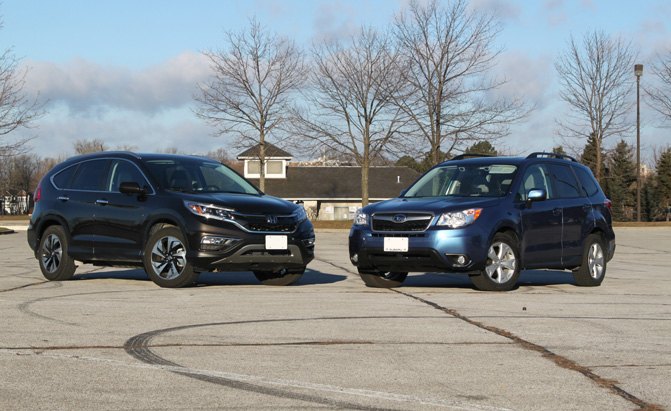















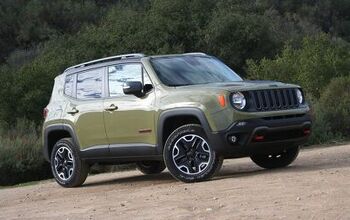

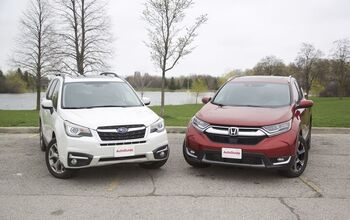
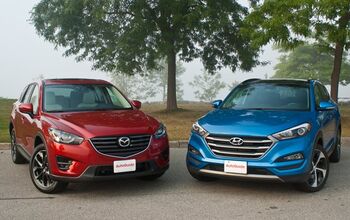
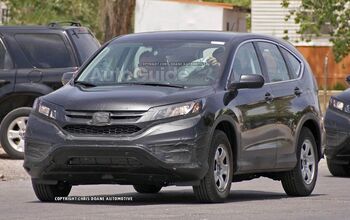






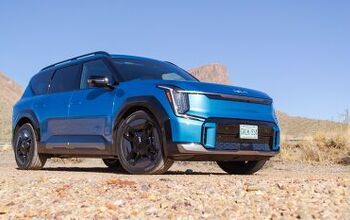

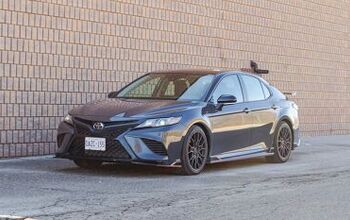

Comments
Join the conversation
I have a 2013 crv with regular transmission and just bought a 2016 honda crv touring, both are awd. I traded in a 2008 honda civic that we owned since new. On the 2008 civic and 2013 crv -WE NEVER HAD A REPAIR NEEDED IN 150,000 COMBINED MILES! That's why I bought another 2016 crv. It has CVT transmission, love it. I have had other cars with cvt as well, never had issues. All car manufacturers are going with cvt in the future. Honda has the best,like other parts in their cars. I also was looking at only one other vehicle, Subaru Forester. My brother,who has been a mechanic for over 30 years told me Honda makes a better vehicle.
Reliability is an important aspect of any vehicle consideration b4 buying one..in that alone, we all know the honda wins, infact rivals Toyota.. but you are in siberia where it's snowy most of the time,go for the subaru due to a superior and system... Just to add I respect mazda..especially without cvt..,but no match for honda and subaru